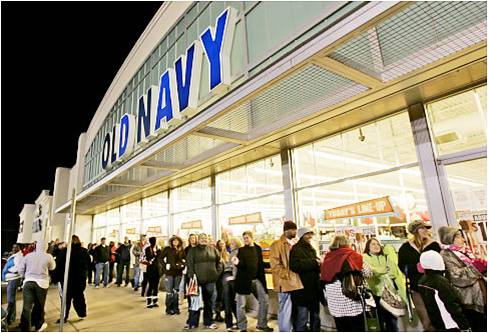Almost every news item surrounding this year’s Black Friday shopping ritual focused purely on store traffic and consumer turnout. The media was consumed with stories of which retailers had the biggest line-ups of overnight campers. News-wires were humming with up-to-the-minute reports and video of consumers sprinting through stores to get their hands on blow-out bargains. Details of price-cuts on everything from apparel to electronics dominated the press. Even Canadian retailers got into the fray to keep domestic consumers and their now strong  Canadian dollar above the forty-ninth parallel.
Canadian dollar above the forty-ninth parallel.
Meanwhile, retail analysts waited with bated breath for the results to be tallied so they could diagnose the general health of the retail sector. Sort of like a capitalistic version of Groundhog Day, with entire retail industry anxiously awaiting the consumers’ ascent from their hole. All that seemed to matter was that top-line sales numbers were better – even marginally – than last year.
What I found most disturbing was that in all the commentary surrounding Black Friday there was barely a mention of profit. Amidst all the talk of slashed prices and crowd-control, no one seemed the least bit interested if retailers would actually make more profit this year than last. Isn’t that kind of important? Isn’t the true health of a business measured by its profitability?
The fact is that the mathematics of discounting can be frightening. Assuming your costs don’t change, simply reducing price puts you in a position where your volume has to increase exponentially to make up the shortfall in profit. For example, a mere twenty percent discount on an item that has a forty percent profit margin, represents a decrease in gross profit of fifty percent. Put simply, to earn the same profit, the retailer would now have to sell twice as much! I don’t know of any retailers who reported selling twice as much this Black Friday as they did last year.
The whole Black Friday ordeal seems oddly indicative of many of the problems that got us into this economy in the first place – the attitude that real growth is no longer a requisite for success. Whatever boosts the share price becomes the “strategy de jour”. And the media would rather churn out easily digested hype than examine the real facts and their implications. Why let the truth get in the way of a good story?
For my part, I’ll be watching the numbers too. The ones that will interest me most, though, are all on the bottom line.

